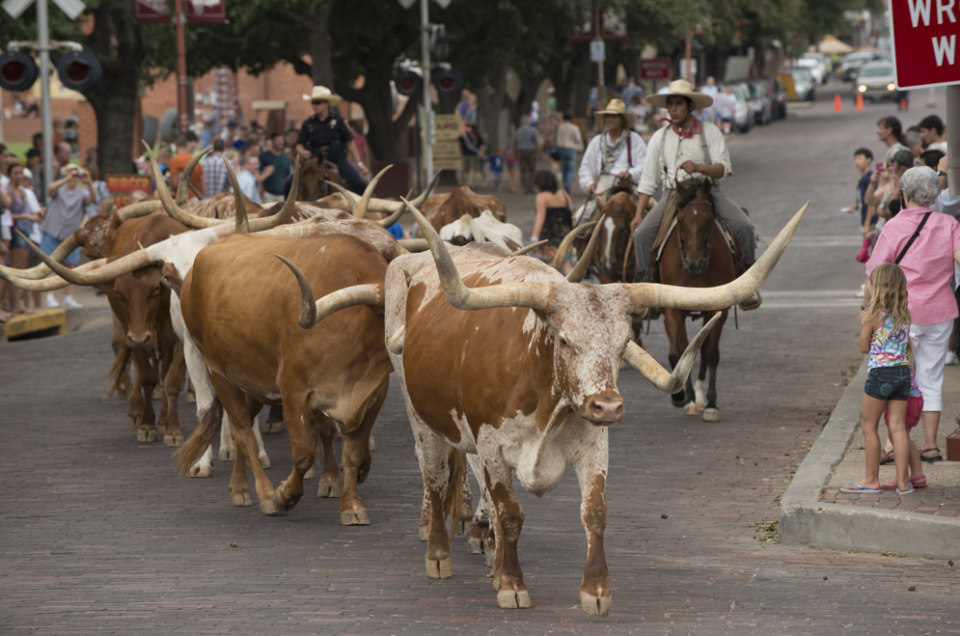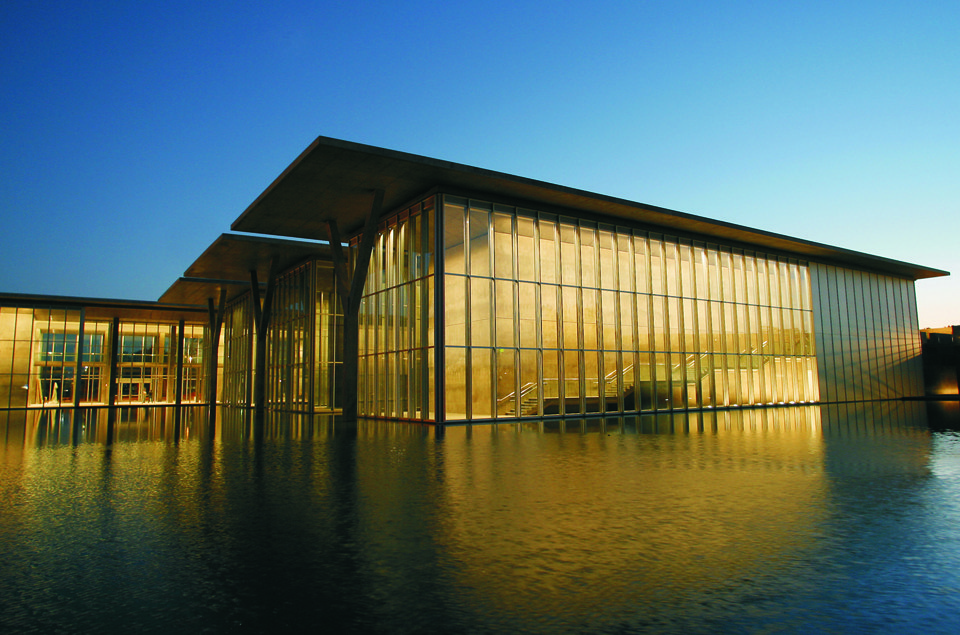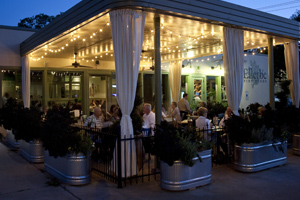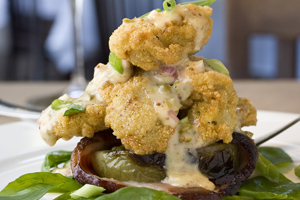Standing in the middle of the Fort Worth Stockyards National Historic District, I watch as a team of cowboys (known here as drovers) steer a herd of Texas longhorns down the middle of a brick-lined street, through a family-filled crowd of tourists. I’m surrounded by Texas twangs, saccharine sweet “yes ma’ams” and the fresh scent of cow poop. These are all things that I happily left behind when I left Texas for college in Ohio more than 15 years ago, and I’ve never looked back. Which is why, during this trip to Fort Worth, I expected to find a big-haired, suburb-like version of Dallas that I felt so-so-at-best about. Instead, I found in Cowtown a charming side of Texas I never knew I loved.
Yes, I’ve always been more of an Austin girl, despite the fact that I grew up in Houston. I come from solid Midwest stock, and my parents, though they still live in Texas, have never called themselves Texans, and worked hard to correct any whisper of a Texas accent that came out of my mouth growing up. Maybe that’s why we generally left the state for family trips, rather than staying deep in the heart of Texas. And maybe that’s why it took living in four states since college to discover that I’d been missing out on a pretty cool Texas scene.
The thing I love about Fort Worth is the same thing I love about Austin, and it’s what’s missing from so many towns, Texas and otherwise: it feels organic.
Yes, there are areas of town that feel master planned, but there are other parts of town, like the Stockyards, that have a whimsical sense of history, perfectly straddling the line between cheesy and delightful. Plus, Texans are incredibly friendly people.
The twice-daily cattle drives here pay tribute to Fort Worth’s spot on the Chisholm Trail, which was once traversed by thousands of cattle a day. Back in the late 1800s, a longhorn that was worth about $1 in Texas or Mexico could fetch upwards of $40 to the north. So drovers wrangled them north through Fort Worth. Part of ol’ Cowtown was nicknamed “Hell’s Half Acre,” because it was the last stop along the trail for the drovers have one last hoot and holler before entering 500 miles of Wild West territory.
Today, the Stockyards remain true to the hootin’ and hollerin’ time. Not far from the cattle drive, you can visit Billy Bob’s Texas, which is the world’s largest honkytonk, with 100,000 square feet of space featuring 30 bars, a concert venue, a dance floor, BBQ restaurant, arcade and live professional bull riding Friday and Saturday nights. A few blocks away is the White Elephant Saloon, which dates back to 1890 and has a history tied first to gunfights and then to ghosts. Within stumbling distance is the historic Stockyards Hotel, a tribute to days past, which opened its doors in 1907, at a time when it’s Old West décor was actually considered new (Note: I stayed at the lovely Omni Fort Worth during my visit, but would love to stay at the Stockyards Hotel next time I’m in town).
But there’s more than just cowboys to Fort Worth. There’s culture—including a walkable museum district. Having literally grown up in my car in Houston, “walkable” and “Texas” generally conflict in my mind. So I was thrilled to explore the Fort Worth Cultural District. Top on the list is The Kimbell Art Museum. This museum, designed by Louis Kahn, is considered to be one of America’s best small museums, and deservedly so. Here, the 350 works straddle a broad range in time from ancient days to the 20th century, and the artists span the world. What stood out most to me here was the descriptions below each work. They go well beyond the basic artist name and date. Instead, the displays weave compelling stories, share trivia and bring a deeper understanding to the art.
Next, get lost in the Modern Art Museum of Fort Worth. Here, the building, designed by Tadao Ando, is a work of art in and of itself, a striking building of concrete and glass—industry and grace—surrounded by calm and peaceful waters. Inside, more than 3,000 works of art, including sculptures, paintings, photos, videos, objects and more, created after 1945, boggle the mind (as does the delicious Moroccan salad served at Café Modern, a great stop for locally sourced food and a nice glass of wine).
The mindboggling continues at the Fort Worth Museum of Science and History, where everyone can feel like a kid again exploring the many evolving, interactive science exhibits, along with the Planetarium, Omni Theater, Children’s Museum and Cattle Rasiers Museum—all under one roof. Be sure and make time to stop by the Cowgirl Hall of Fame to see how women helped shape the West. Art buffs will also enjoy the Amon Carter Museum of American Art, dedicated to masterworks from around the country. After a day here in the cultural district, you’ll understand why Fort Worth is known as the museum capital of the Southwest (and you’ll be ready to get off your feet!).
After your cultural foray, head downtown to Sundance Square, where Reata serves up “cowboy cuisine”—hearty food with a southwestern flair. Here, the charbroiled Texas ribeye is as delicious as the dare-I-say delicate field greens salad with goat cheese, pecans and Sherry wine vinaigrette. I passed on the calf fries with cream gravy, but ate the hell out of the smoked quail with jalapeno cheddar grits, bacon-wrapped shrimp and tumbleweed onion rings, washing it all down with a locally brewed Rahr beer.
Fortunately, not all food in Texas is Texas-sized. During my visit, I also fell in love Ellerbe Fine Foods, a small but sophisticated farm-to-table neighborhood spot. Here, the menu changes according to season, and as of this writing, some of the highlights were a roasted butternut squash and Gruyere baklava, cornmeal crusted gulf flounder and brown sugar brined wild boar rack.
Since discovering Fort Worth, I feel like I’ve become a missionary, spreading the good word for the city. I’ve implored my friends, family and even non-Texan Texan parents to visit, and every time I proclaim my love for this city I get the same response. “Really?”
Really. For nearly 35 years I ignored the Texan side of my Texas roots. In Cowtown, it all suddenly made sense and I learned to embrace it. Yes ma’am, I did.




